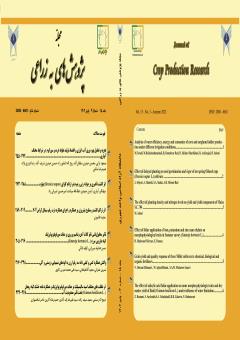Effect of foliar application of iron, potassium and zinc nano chelate on morphophysiological traits in Summer savory (Satureja hortensis L .)
Subject Areas : Crop Production ResearchHasan Hadavand Mirzaee 1 , Elham Danaee 2
1 - M.Sc. graduated, Department of Horticultural Sciences, Garmsar Branch, Islamic Azad University, Garmsar, Iran.
2 - Associated Professor, Department of Horticultural Sciences, Garmsar Branch, Islamic Azad University, Garmsar, Iran.
Keywords: Iron, Nano chelate, Potasium, Satureja hortensi, Zinc,
Abstract :
The use of nanotechnology is expanding in all fields, including agriculture. In order to study the effect of foliar application of iron, potassium and zinc nano chelate on the morphophysiological characteristics of savory plant (Satureja hortensis), an experiment was conducted in the form of a completely randomized statistical design with 7 treatments including two levels of iron, potassium and zinc nano chelate (3 and 6 mg/liter) in 3 replications. After about 4 weeks have passed since the cultivation of savory seeds in a suitable Media, foliar spraying with nano chelate of iron, potassium and zinc was done once every two days for a week. The pot without foliar spraying was used as a control. After the plant reached the appropriate stage of harvesting and marketing, the morpho-physiological traits of the plant such as fresh and dry weight of shoot and root, total chlorophyll of leaf, iron, potassium and zinc content of the leaf were evaluated. The results showed that the highest fresh and dry weight of the shoot was in iron nano chelate 6 mg/liter treatment and the highest fresh and dry weight of the root was in potassium nano chelate 6 mg/liter treatment. The highest total chlorophyll content was obtained in iron nano chelate of 6 mg/liter treatment. The highest amounts of iron, potassium and zinc were respectively in iron nano chelate 6 mg/liter, potassium nano chelate 6 mg/liter and zinc nano chelate 6 mg/liter treatments. Therefore, according to the results of the research, the treatment concentration of 6 mg/liter of the used elements can be recommended to improve the quantitative and qualitative traits of the savory plant.


